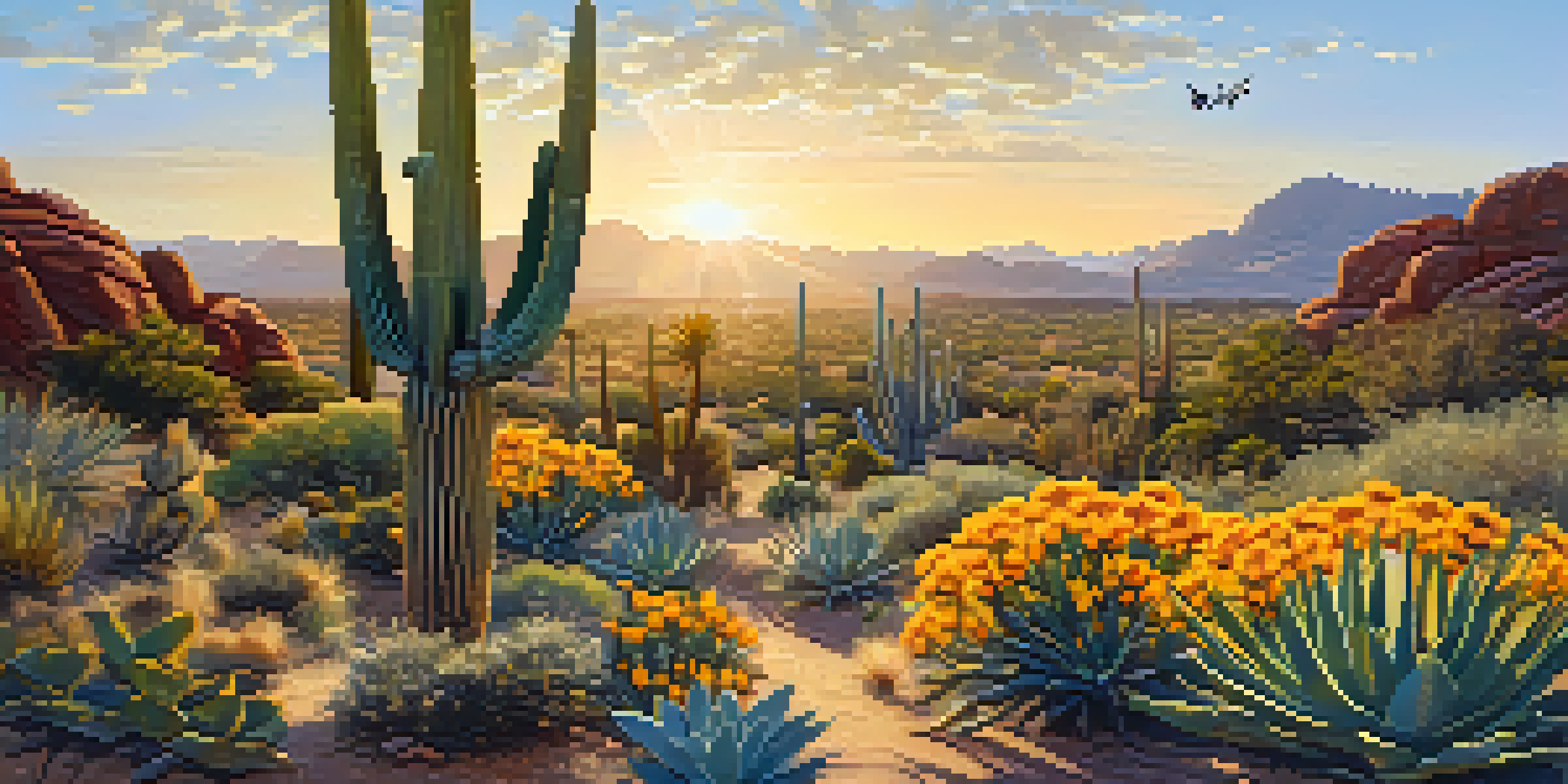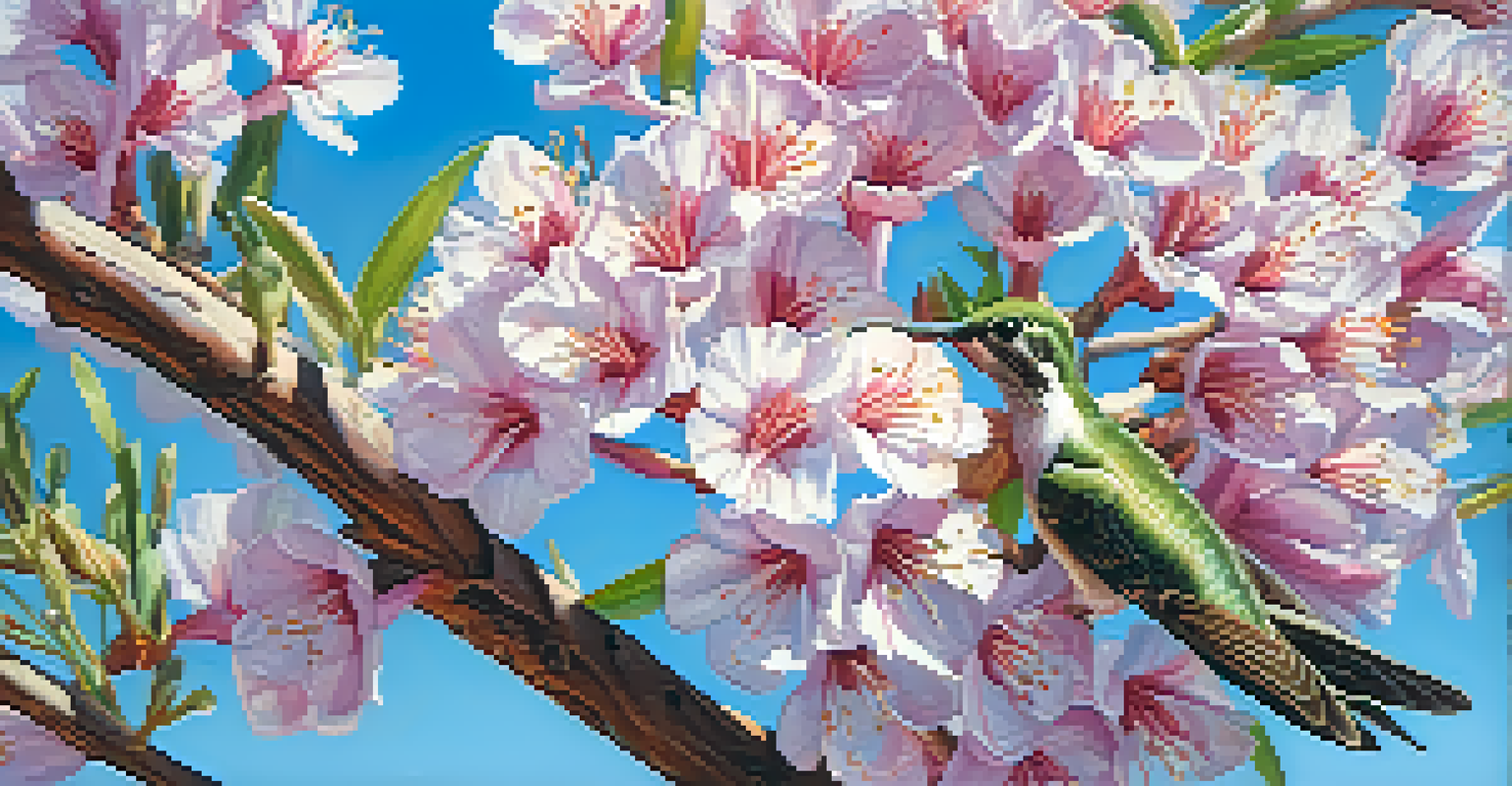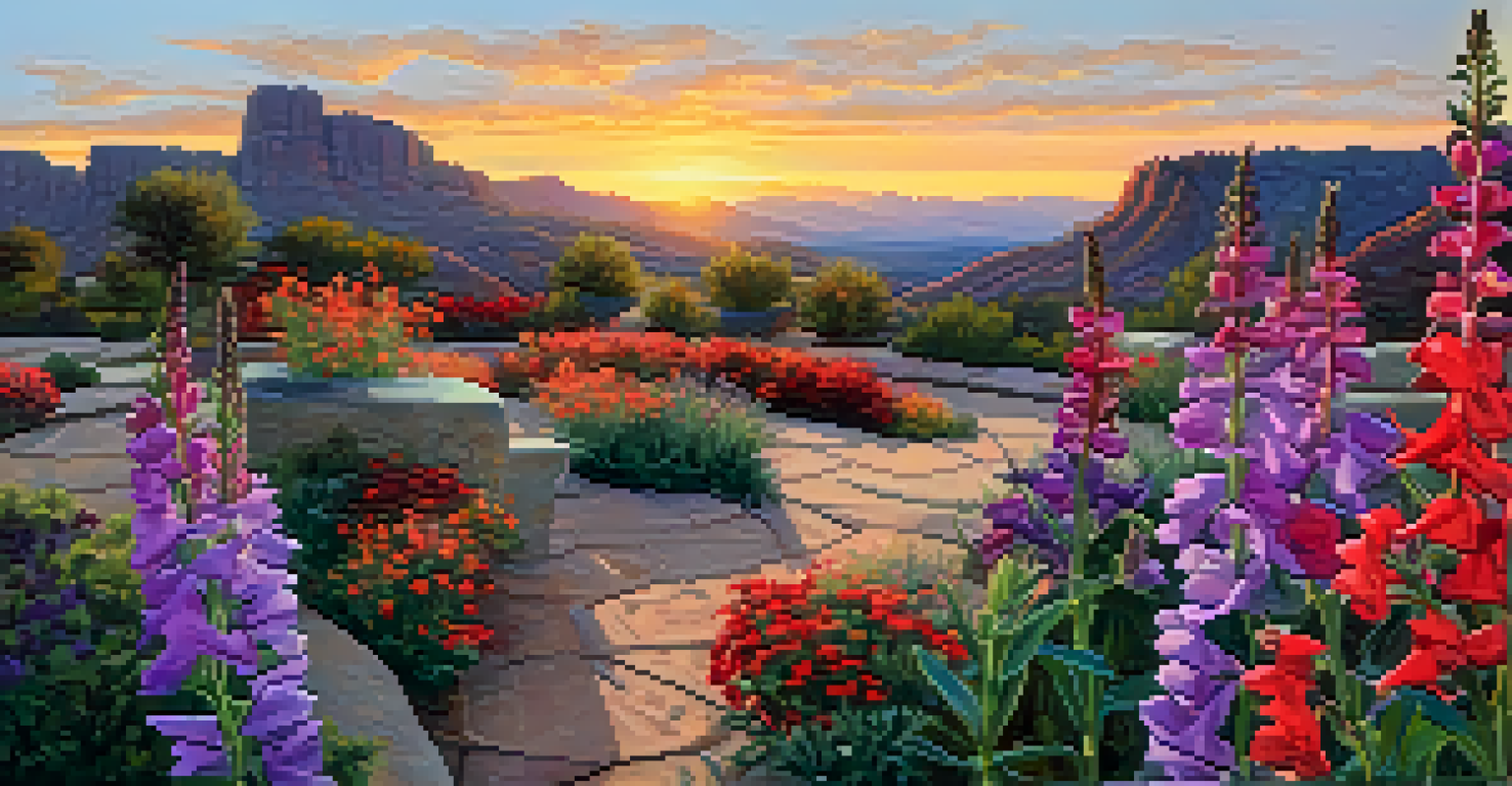Top Native Plants for a Sustainable Phoenix Garden

Why Choose Native Plants for Your Garden
Native plants are perfectly adapted to their local environment, making them easier to grow and maintain. In Phoenix, where the climate can be harsh, these plants thrive with less water and care compared to non-native species. By choosing native plants, you're also supporting local wildlife, including pollinators like bees and butterflies.
The greatest threat to our planet is the belief that someone else will save it.
Moreover, native plants contribute to the overall biodiversity of your garden. When you plant native species, you create a habitat that encourages various insects and birds, promoting a balanced ecosystem. This not only enhances the beauty of your garden but also fosters a healthy environment.
Finally, native plants often require less fertilizer and pesticides, which means you're minimizing chemical runoff into local waterways. This aligns beautifully with sustainable gardening practices, making it a win-win for you and the environment.
Agave: A Hardy Choice for Desert Gardens
Agave plants are iconic in desert landscapes, known for their striking appearance and resilience. These succulents store water in their thick leaves, making them perfect for arid climates like Phoenix. Plus, they add a dramatic touch to any garden setting, with many varieties available in different sizes and colors.

Not only are agaves beautiful, but they also require very little maintenance once established. A little water during the hottest months is often enough to keep them thriving. This low upkeep makes them an ideal choice for both novice and experienced gardeners alike.
Native Plants for Easy Gardening
Choosing native plants simplifies gardening as they thrive in local climates with minimal water and care.
Additionally, agave plants produce stunning flower spikes that attract pollinators, turning your garden into a lively hub of activity. By incorporating agave into your landscape, you're not just enhancing its aesthetic appeal but also supporting local wildlife.
Desert Marigold: A Splash of Color
Desert Marigold is a vibrant, sun-loving wildflower that brings a burst of yellow to any garden. This hardy plant blooms from spring through fall, providing consistent color and attracting butterflies. Its cheerful blossoms can brighten up even the driest of landscapes, making it a favorite among local gardeners.
In nature, nothing exists alone.
Beyond its beauty, Desert Marigold is incredibly drought-tolerant, thriving in poor soils with minimal watering. This makes it an excellent choice for sustainable gardening, as you’ll be conserving water while enjoying its vibrant blooms. Plus, it’s low maintenance—just plant and enjoy!
Another great feature of Desert Marigold is its ability to self-seed, allowing it to spread and create a naturalized look in your garden. This adds to the overall biodiversity and helps create a more resilient garden environment, which is ideal for sustainability.
Saguaro Cactus: The Icon of the Southwest
No list of native Phoenix plants would be complete without the iconic Saguaro cactus. These majestic giants can grow to be over 40 feet tall and live for over 150 years, making them a symbol of the desert landscape. Their unique shape and structure add an impressive focal point to any garden.
Saguaro cacti are well-suited for the Phoenix climate, requiring minimal water once established. This makes them a sustainable choice for gardeners who want to minimize their water usage. Additionally, they provide essential habitat for various desert wildlife, including birds and small mammals.
Support Local Wildlife
Planting native species fosters biodiversity by attracting pollinators and creating habitats for local wildlife.
The Saguaro also produces beautiful flowers in late spring, which are not only stunning but also attract pollinators. By planting a Saguaro in your garden, you’re not just beautifying your space; you’re also contributing to the local ecosystem in a significant way.
Texas Sage: A Fragrant Addition
Texas Sage, also known as Leucophyllum frutescens, is a fantastic shrub that adds both beauty and fragrance to your garden. This drought-tolerant plant blooms with lovely purple flowers, especially after rain, offering a delightful visual treat. Its silvery leaves create a lush backdrop that complements its vibrant blossoms beautifully.
This hardy shrub is perfect for a sustainable Phoenix garden, as it thrives in poor, rocky soils with little water. Once established, it requires very little maintenance, allowing you to enjoy its beauty without the hassle. Plus, it can handle the intense heat that Phoenix often experiences.
Texas Sage also attracts pollinators, making it an excellent choice for those looking to create a biodiverse garden. The combination of beauty, low maintenance, and ecological benefits makes Texas Sage a beloved choice among local gardeners.
Desert Willow: A Tree for All Seasons
The Desert Willow is a stunning tree that offers both shade and beauty to your garden. With its graceful branches and trumpet-shaped flowers, this tree is not only visually appealing but also provides a habitat for various birds and insects. It’s a great choice for homeowners looking for a sustainable option that enhances their outdoor space.
This tree thrives in the heat of the desert and is highly drought-tolerant once established. It can grow quite large, making it a perfect choice for providing shade in those hotter months. This reduces the need for air conditioning, ultimately saving energy and costs.
Sustainable Gardening Practices
Native plants require less fertilizer and pesticides, reducing chemical runoff and promoting a healthier environment.
Moreover, the Desert Willow has a long flowering season, which attracts hummingbirds and butterflies to your garden. By planting this tree, you're creating a lively, vibrant space that supports local wildlife and offers a peaceful retreat for you and your family.
Penstemon: The Pollinator's Favorite
Penstemon, also known as beardtongue, is a popular native plant that blooms with stunning tubular flowers, attracting a variety of pollinators. Its vibrant colors and unique shapes make it a favorite among gardeners looking to enhance the beauty of their outdoor space. Planting Penstemon not only adds visual interest but also creates a buzzing habitat for bees and butterflies.
This resilient plant thrives in dry conditions, making it ideal for Phoenix gardens. It requires minimal water once established, which aligns perfectly with sustainable gardening practices. Plus, Penstemon comes in various species, allowing you to choose the best fit for your garden’s aesthetic.

Penstemon's ability to bloom from spring to fall ensures that your garden remains vibrant for much of the year. By incorporating this plant, you're not just beautifying your garden; you’re also supporting vital pollinator populations that play a crucial role in our ecosystem.
Creating a Sustainable Garden with Native Plants
Incorporating native plants into your Phoenix garden is a step towards sustainability that anyone can embrace. Not only do native plants require less water and maintenance, but they also support local wildlife, making your garden a thriving ecosystem. By replacing high-water-use plants with these resilient species, you'll create a landscape that flourishes even in the desert heat.
Consider grouping plants with similar water needs together to create microclimates, which can help in managing water usage efficiently. This practice not only conserves water but also enhances the overall health of your plants. Additionally, using mulch can help retain soil moisture and reduce the need for frequent watering.
Lastly, keep in mind that a sustainable garden is also about creating a space that reflects your personal style. Use a mix of textures, colors, and heights with your chosen native plants to design a garden that you love while being mindful of the environment. It’s a beautiful way to connect with nature and contribute to the local ecosystem.